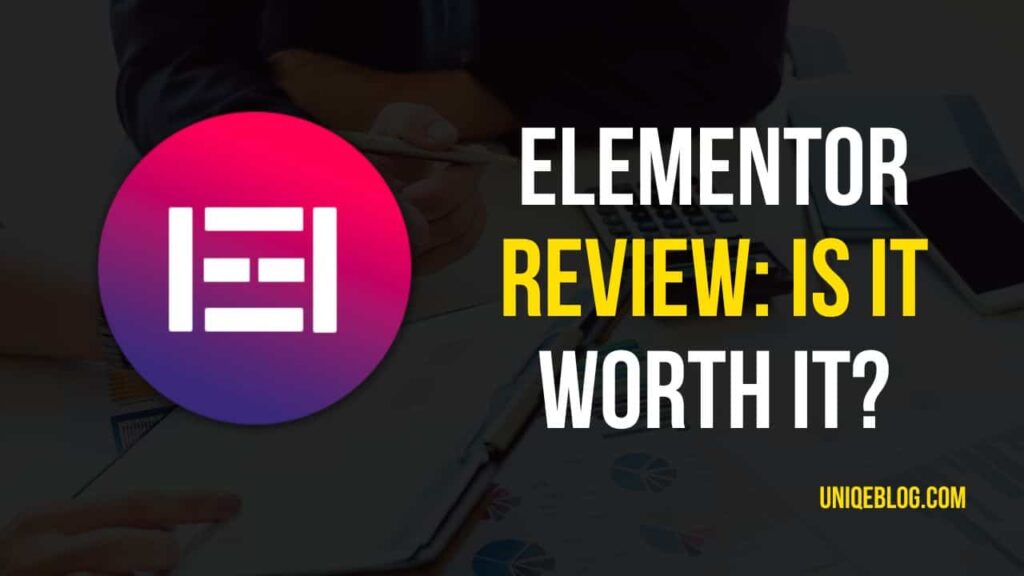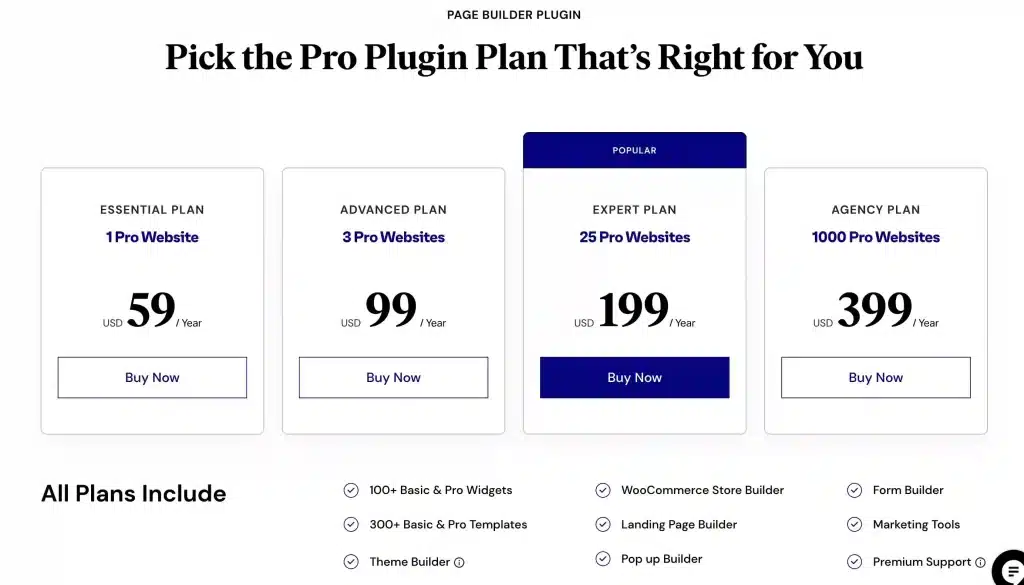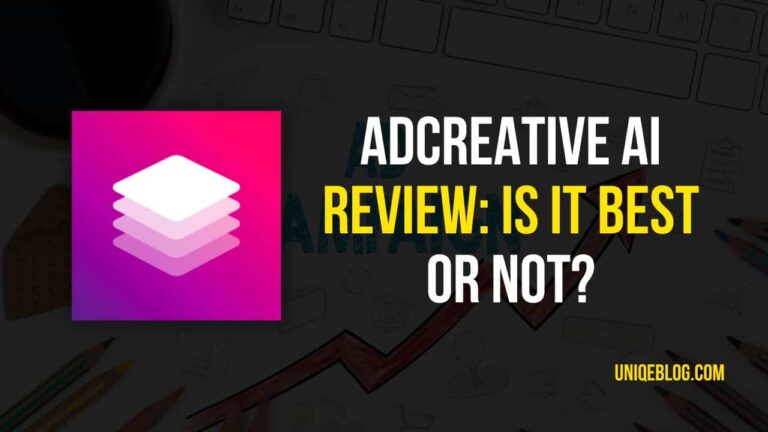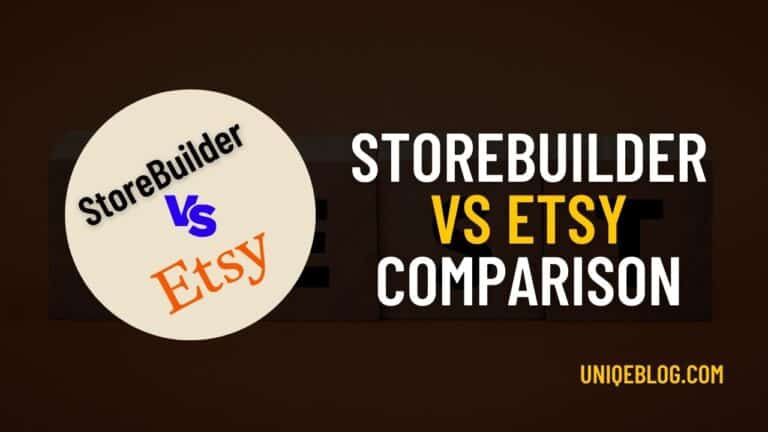Elementor Review 2024: Is it worth it To Buy?
Are you searching for a reliable Elementor review to help you decide whether or not to invest in this powerful website builder?
Look no further. In this Elementor review, we’ll provide an in-depth analysis of the features and functionalities of Elementor.
Elementor Pro offers advanced features that can help you create custom designs, optimize your website for search engines, and enhance user engagement.
But is it worth the investment?
We’ll answer that question and more in this comprehensive Elementor review.
Whether you’re a seasoned developer or a beginner looking to create a professional-looking website, read on to learn how Elementor Pro can help you achieve your goals.
Elementor Review: What Is Elementor?

Let us now start by defining Elementor and understand what it actually is!
Elementor is a drag-and-drop page builder plugin for WordPress that enables users to create custom websites without needing to know how to code.
With its intuitive user interface, users can easily design and customize their website’s layout, including the header, footer, and content areas, using pre-made templates or building from scratch.
Elementor also offers a range of widgets and modules to add functionality to your website, such as forms, galleries, and sliders.
Additionally, Elementor is known for its fast loading speeds and mobile responsiveness, making it an excellent choice for building websites that offer an optimal user experience.
Well! Let us now see what Elementor has to offer!
What Does Elementor Offer?
Elementor offers a wide range of features and functionalities that make it a powerful website builder.
Here are some of the key offerings of Elementor:
- Drag-and-Drop Interface: Elementor’s drag-and-drop interface makes it easy to customize your website’s layout, including the header, footer, and content areas.
- Pre-made Templates: Elementor offers a library of pre-made templates for various website types, including blogs, e-commerce stores, and portfolios, making it easy to get started with your website design.
- Customization Options: With Elementor, you can customize every aspect of your website, including fonts, colors, and backgrounds.
- Responsive Design: Elementor ensures that your website looks great on all devices, including mobile phones and tablets.
- Widget Library: Elementor offers a comprehensive widget library that includes everything from buttons and images to forms and pricing tables.
- Third-Party Integrations: Elementor integrates with many third-party tools and plugins, including WooCommerce, Yoast SEO, and Mailchimp.
- Theme Builder: Elementor’s Theme Builder allows users to design custom templates for various parts of their website, such as the single post page or archive pages.
Who Is Elementor For?
Elementor is for anyone who wants to create a custom website without having to know how to code.
Here are some examples of who Elementor is for
- Business Owners – Elementor allows business owners to create a professional-looking website that showcases their products or services and helps them attract more customers.
- Bloggers – Bloggers can use Elementor to design a custom blog layout, including the header, footer, and content areas, making it easy to create a unique and engaging blog.
- Developers – Developers can use Elementor to speed up the website development process and create custom templates and designs for their clients.
- Designers – Designers can use Elementor to create stunning designs without having to know how to code, making it easier to bring their creative visions to life.
- E-commerce Store Owners – E-commerce store owners can use Elementor to create a custom online store that showcases their products and helps them increase sales.
- Casual User – If you’re a casual user seeking an easy way to enhance the appearance of your blog posts or create an impressive homepage, Elementor is an ideal solution for you.
With its intuitive visual interface, you can design attractive layouts without any technical expertise, and you may be able to do it for free.
The Good, Bad, And Ugly

In this review, I’ll be sharing experiences with the tool Elementor and highlighting its pros and cons.
We will have a look at all the good, bad, and ugly sides of Elementor.
Let’s dive right into it.
The Good:
- Elementor Pro offers a ton of features and functionality for creating stunning websites, without the need for any coding.
- The interface is user-friendly and easy to navigate, with a helpful Elementor Finder tool that makes it easy to locate specific settings.
- Adding elements to your pages is a breeze, thanks to the drag-and-drop functionality and extensive library of pre-made elements.
- There are plenty of customization options available, allowing you to tweak just about every aspect of your design.
- The Pro version also includes some great additional features, such as the ability to create pop-ups and theme builder templates.
- Elementor Pro includes a visual form builder, making it easy to create custom forms for your website.
The Bad:
- While Elementor Pro is certainly powerful, it may be overwhelming for beginners who are just getting started with web design.
- The pricing for Elementor Pro can be a bit steep, especially if you’re on a tight budget.
- The sheer number of customization options available can be overwhelming, making it difficult to know where to start.
- Some users have reported issues with slow loading times or sluggish performance when using Elementor Pro.
- While the library of pre-made elements is extensive, some users may find that certain elements are missing or not customizable enough.
- Some users have reported compatibility issues with certain WordPress themes or plugins, which can be frustrating to deal with.
The Ugly:
- There aren’t too many major downsides to Elementor Pro, but some users have complained about occasional bugs or glitches in the software.
- Customer support can be hit or miss, with some users reporting slow response times or unhelpful support agents.
- There have been reports of compatibility issues with certain web hosting providers, which can cause problems when trying to use Elementor Pro.
- Some users have reported issues with the responsive design features, with certain elements not scaling correctly on smaller screens.
Elementor Pricing
It is free to use the basic version of Elementor that is offered in the WordPress Plugin repository.
Additionally, there is a pro edition with significantly more flexibility and features.
Here are some of the features offered in the basic version:
- Drag-and-Drop Interface
- Pre-made Templates
- Responsive Design
- Access to 40+ Basic Widgets and Templates
- Font and Color Customization
- Mobile Editing Options
- Integration with Popular WordPress Themes and Plugins
Okay! But what are the features that we get with the Pro version?
Should you opt for it? Is it really worth it?
Well! Hold on! Because we’re here to discuss everything with you.
Before we dive deeper, here are all the features offered in the Pro version:
- Over 90 Advanced Widgets and Templates
- Theme Builder
- WooCommerce Builder
- Popup Builder
- Custom Fonts and CSS
- Advanced Animations and Effects
- Role Manager
- Advanced Form Builder
- Dynamic Content
- Third-Party Integration Options
Okay, folks! Time to go through Elementor pro pricing so let us check that out too!
Elementor Pro Pricing

Elementor Pro offers a pricing plan that consists of five different tiers depending on the number of licenses required.
Here are all the pans offered by Elementor Pro:
Elementor Pro offers a variety of pricing plans that cater to different needs and budgets.
If you only need to work on a single website, the Essential Plan, which costs $49 per year, is likely the best option.
Elementor Pro offers a variety of pricing plans that cater to different needs and budgets.
If you only need to work on a single website, the Essential Plan, which costs $49 per year, is likely the best option.
It includes access to all of Elementor’s advanced widgets and templates, as well as the theme builder and WooCommerce builder.
If you work on multiple websites, the Advanced Plan, which costs $99 per year, offers up to three website licenses, making it a more suitable option.
The Expert Plan, which costs $199 per year, offers up to 25 website licenses, while the Studio Plan, which costs $499 per year, offers up to 100 website licenses.
Finally, the Agency Plan, which costs $999 annually, offers up to 1,000 website licenses, making it ideal for large-scale web development agencies or businesses.
All Elementor Pro plans come with an annual subscription, which means that you’ll need to renew your license each year to continue using the plugin’s advanced features.
How Elementor Works: Touring the Interface

In this section, we’ll take a look at how Elementor operates. Similar to other plugins, the first step is to install and activate Elementor from the WordPress repository.
After installation, you can choose to customize Elementor’s settings or begin designing your website right away.
If you’re new to Elementor, it’s best to stick with the default settings.
Navigate to the Pages section and select the page you wish to modify.
To edit the page, click the “Edit With Elementor” button.
To demonstrate how Elementor works, we’ve installed the Astra theme and imported one of its website templates that were built using Elementor.
With that demo site set up, let’s take a closer look at the Elementor dashboard. Below is a screenshot of what the dashboard looks like.
Below are the numbered labels for the various parts.
- The working area or the main canvas. This is where you edit and redesign your website
- Elementor widgets area
- Elementor settings
- Open Elementor widgets
- Global settings
- Revision history
- Switch view (desktop, tablet, mobile)
- Preview changes
- Publish
Elementor Structure Hierarchy
If you’re new to web design, it’s important to understand the basic structure of the Elementor page builder.
Every page built with Elementor consists of sections and columns.
A section is equivalent to a row in traditional page design.
It can be customized by adding a background, adjusting its size, and more. Within a section, you can add columns and widgets.
A column is used to divide a section into different segments, allowing you to control each column individually.
It’s worth noting that a page can have any number of sections, each containing a variety of columns and Elementor widgets.
To help illustrate this structure, take a look at the following image:
Should You Use Elementor Free vs Pro?
You’ve come this far in the article so I am quite sure that you are interested in Elementor so you should go for Elementor Pro.
Haha! Just kidding, let’s get into it now!
If you’re considering using Elementor, one of the key decisions you’ll need to make is whether to opt for the free version or invest in Elementor Pro.
The free version of Elementor is an excellent choice if you’re just getting started with web design or have a limited budget.
It offers a range of basic features, including an intuitive drag-and-drop editor, over 40 basic widgets, and the ability to create responsive designs.
However, if you’re serious about creating a professional-looking website with advanced features and functionality, it may be worth investing in Elementor Pro.
With Pro, you’ll gain access to features that include:
- 30+ new widgets that include the Form widget, perfect for marketing pages.
- The Theme Builder feature enables you to design your entire theme and WooCommerce store using Elementor.
- Popup Builder allows you to create popups using Elementor.
- Provides more templates than the free version, giving full access to users.
- With Elementor Pro, you get access to more design options, such as custom positioning.
Ultimately, the decision to use Elementor Free vs Pro will depend on your specific needs and goals for your website.
You might want to consider your budget, the complexity of your project, and the level of customization you require before making a final decision.
Does Elementor Slow Down Your Website?
Well, well, well, looks like we’ve got a really hot topic on our hands.
The burning question of the hour: does Elementor slow down your website?
It’s a valid concern, folks. After all, you don’t want your site taking longer to load than it takes your grandma to knit a sweater.
Now, Elementor is a pretty nifty plugin that allows you to spruce up your site with fancy widgets and styles, without having to be a coding wizard.
But, let’s face it, too much of a good thing can be bad for you, like eating an entire tub of ice cream in one sitting.
So, we decided to put it to the test.
We compared the speed of two of our starter template websites, one built with Gutenberg (the default WordPress editor) and the other with Elementor.
The results?
Let’s just say, it’s not as simple as “Elementor always slows down your site.”
As is evident from the results, the website built with Gutenberg loads much faster than the website created with Elementor.
To be more specific, the website made with Elementor took around 5.5 seconds to load completely, whereas the website made with Gutenberg took only 2.2 seconds.
When it comes to website speed and SEO optimization, every second counts.
You don’t want your website to load slower than a sloth climbing uphill.
That’s why it’s essential to choose a page builder that won’t hold your website back.
Our comparison shows that Gutenberg beats Elementor hands down, taking only 2.2 seconds to load compared to a sluggish 5.5 seconds.
Beaver Builder did slightly better than Elementor, but it still took a second longer to load fully.
So, if you want your website to outrun your competitors, make sure to choose your page builder wisely!
Elementor Pros And Cons
So, we have been talking only about the good things about Elementor Pro!
Does it have any Cons?
Well well! I guess you’ll be having these questions for sure so I decided to present a comparison table for you people!
Thank me later, haha!
Jokes apart here’s a table outlining some of the pros and cons of using Elementor:
| Pros | Cons |
| User-friendly interface | Can slow down website speed |
| No coding required | Not all templates are free |
| Extensive customization options | Can be expensive for advanced features |
| Wide variety of widgets and templates | Limited integration with some third-party plugins |
| Theme builder for complete design control | Limited control over responsive design |
| Popup builder for easy lead generation | Limited styling options for some widgets |
| Regular updates and improvements | Limited support for multi-lingual websites |
| Good community support and resources | Can be overwhelming for beginners |
| Works well with WooCommerce | Can be difficult to optimize for SEO |
Conclusion About Elementor Review
Alrighty, folks, it’s been real.
After diving into Elementor and taking it for a spin, I gotta say, I’m thoroughly impressed.
Elementor is the bomb dot com when it comes to page builders.
But here’s the real question – is Elementor worth it?
Well, let me put it this way, it’s more worth it than a slice of pizza at 2 am after a night out.
So go ahead, give it a whirl, and let your creative juices flow. With Elementor by your side, the sky’s the limit.

![401+ Free Guest Posting Sites List (April 2024) [High DA]](https://uniqeblog.com/wp-content/uploads/2021/11/guest-posting-sites-list-2-768x432.jpg)


![[Top 7] Best CRM Software in April 2024](https://uniqeblog.com/wp-content/uploads/2022/10/Best-crm-software-768x432.jpg)
![RankMath Review [year] – [Why It Is the Best SEO Plugin?]](https://uniqeblog.com/wp-content/uploads/2023/09/RankMath-Review-768x432.jpg)
